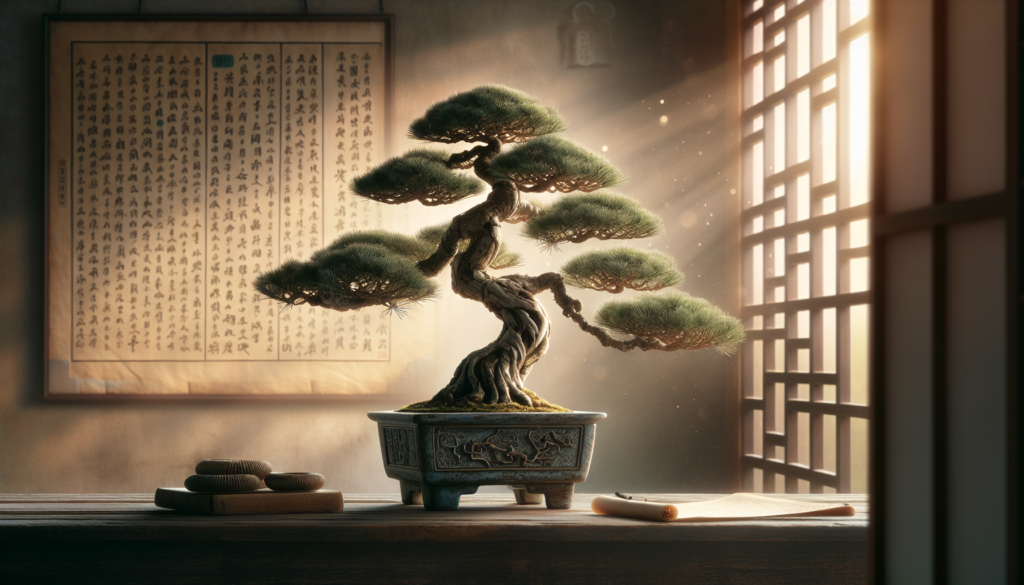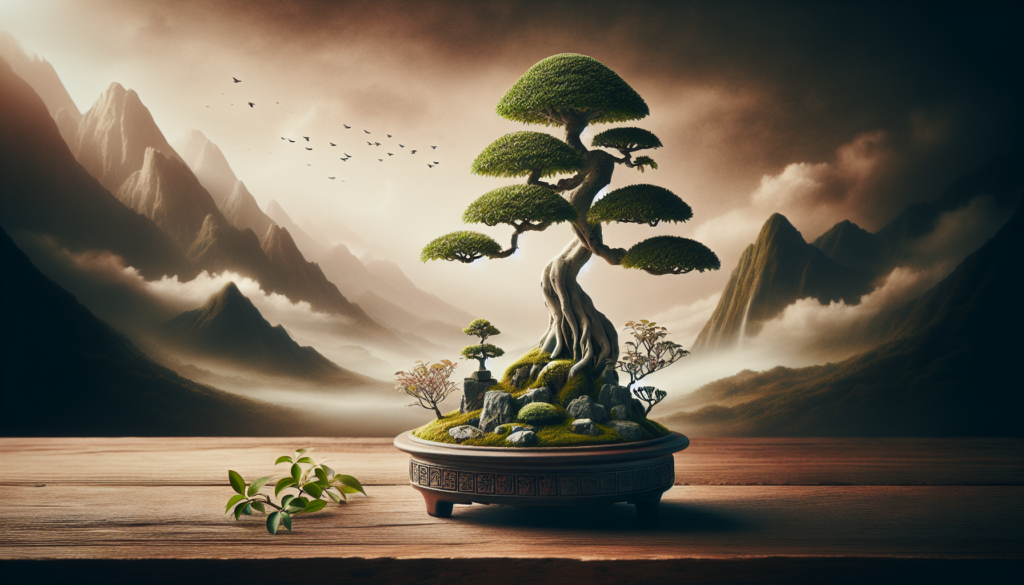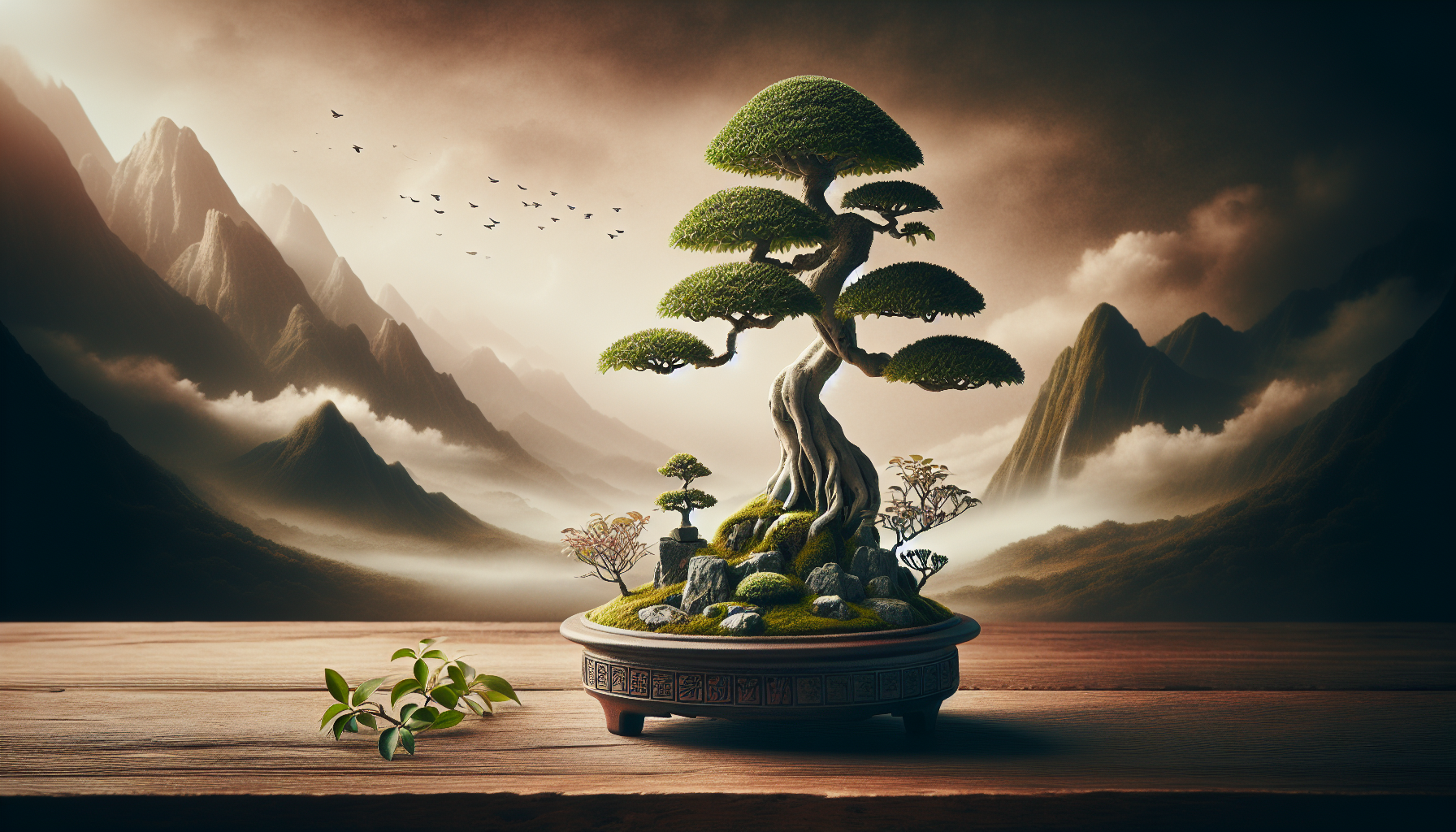Imagine embarking on a magical journey where nature and art intertwine, guiding you towards inner serenity and peace. This captivating article takes you on a fascinating exploration of the art of bonsai, revealing the hidden world of miniature trees and the profound philosophy they embody. Discover how the intricate care and cultivation of these ancient living sculptures can become a transformative practice, inviting you to embrace mindfulness, patience, and a deeper connection with the natural world. Join us as we embark on this extraordinary philosophical journey through the enchanting world of bonsai.

Understanding the Philosophy Behind Bonsai
Bonsai is much more than just an art form or a gardening hobby. It is a living philosophy that has been revered and practiced for centuries. To truly appreciate the beauty and significance of bonsai, one must delve into its profound philosophy, which encompasses key principles, symbolism, and a deep connection with Zen. By exploring these aspects, you can gain a deeper understanding of the art of bonsai and the philosophy that guides it.
Origins of Bonsai Philosophy
The philosophy behind bonsai originated in China over a thousand years ago and was later embraced by the Japanese. It was influenced by various cultural and philosophical traditions, including Taoism and Zen Buddhism. The Chinese concept of “penjing,” meaning “tray scenery,” laid the foundation for bonsai, which evolved into a more refined art form in Japan.
In both China and Japan, bonsai was seen as a way to connect with nature and to bring a sense of tranquility and harmony into one’s life. The early practitioners of bonsai recognized the power of nature’s beauty and sought to capture that essence in miniature form through the art of bonsai.
Key Principles of Bonsai Philosophy
At the core of bonsai philosophy are several key principles that guide the creation and care of these miniature trees. Firstly, bonsai is about capturing and expressing the essence of nature in a confined space. It involves careful cultivation, shaping, and pruning to create a miniature representation of a tree that is harmonious and balanced.
Another important principle is the idea of harmony and balance. Bonsai artists aim to create a composition that reflects a sense of balance between the tree’s branches, foliage, and the container it is planted in. This balance symbolizes the delicate equilibrium found in nature.
Additionally, purity and simplicity are highly valued in bonsai philosophy. Bonsai artists strive to eliminate any unnecessary elements, embracing a minimalist approach that enhances the beauty of the tree. This simplicity allows the observer to focus on the essential qualities of the bonsai and promotes a sense of serenity and tranquility.
Finally, the aspect of time and patience plays a significant role in bonsai philosophy. bonsai cultivation requires dedication and a deep understanding of the tree’s growth patterns. It involves years of careful shaping and nurturing, allowing the tree to develop its unique character over time. Patience is not only a virtue in bonsai; it is a necessity.
Zen and Bonsai: An Inseparable Connection
The philosophy of bonsai is deeply intertwined with the principles and practices of Zen Buddhism. Zen, with its emphasis on mindfulness, simplicity, and being present in the moment, provides a natural connection to the art of bonsai.
Zen teachings encourage individuals to cultivate a deep understanding and connection with the natural world. Similarly, bonsai nurtures this connection through the care and cultivation of miniature trees. Both Zen and bonsai remind us to slow down, observe, and appreciate the beauty that surrounds us.
When practicing bonsai, one must enter a state of mindfulness, focusing on the present moment and the task at hand. By immersing oneself in the art of bonsai, a sense of peace and tranquility can be achieved. The repetitive actions of pruning, wiring, and shaping the tree allow the mind to enter a state of calm and concentration.
The connection between Zen and bonsai goes even deeper. Both philosophies share a belief in the interconnectedness of all things. Bonsai represents a microcosm of the natural world, and by caring for and nurturing a bonsai tree, one becomes an active participant in the cycle of life, embodying the principles of Zen.
Delving into the Zen Concept in Bonsai
To truly understand the philosophy of bonsai, it is essential to explore the concept of Zen and its connection to this ancient art form. By delving into the essence of Zen and its relationship with bonsai, one can uncover the deeper meaning and purpose behind cultivating these miniature trees.
Understanding Zen
Zen is a school of Mahayana Buddhism that originated in China and later spread to Japan, where it became known as “Zen.” At its core, Zen is a path of self-discovery and enlightenment, emphasizing direct experience and contemplation rather than relying solely on scripture or intellectual knowledge.
Zen places great importance on mindfulness and being fully present in the moment. It encourages individuals to let go of attachments and distractions, allowing one to connect with their true nature and the essence of existence.
Zen’s Connection with Bonsai
The practice of bonsai aligns closely with Zen principles and provides a means to cultivate mindfulness and a deep connection with nature. By engaging in the art of bonsai, one can embark on a Zen-like journey of self-discovery and contemplation.
The creation and care of a bonsai tree demand a profound level of concentration and attention to detail. To shape and nurture a bonsai requires a focused and calm mind, similar to the state of meditation encouraged in Zen practice.
As with Zen, bonsai encourages a deep appreciation for the present moment. When tending to a bonsai, one must observe and interact with the tree in the current state, rather than fixating on the past or future. This sense of presence cultivates a connection between the artist and the bonsai tree, allowing for a deeper understanding of oneself and the world.
Using Bonsai to Reach Zen
Bonsai cultivation can be seen as a powerful tool for reaching a Zen-like state of mind. The repetitive tasks involved in caring for a bonsai — such as pruning, wiring, watering, and repotting — require full attention and concentration. These actions become a form of meditation, allowing the mind to become calm and focused.
Through the art of bonsai, one can find a sense of purpose and clarity. Each step in the bonsai journey contributes to a deeper understanding of oneself, the tree, and the interconnectedness of all things. By engaging in this process, individuals can experience a profound connection with nature and cultivate a Zen-like state of mind.
Symbolism in Bonsai
Bonsai is not just an art form; it is a symbolic representation of nature’s spirit and the relationship between humans and the natural world. From the choice of tree species to the design and styling of the bonsai, every element has a deeper meaning and conveys a symbolic message.
Role of Bonsai in Cultural Symbolism
In traditional Eastern cultures, bonsai holds significant cultural symbolism. It is often associated with longevity, endurance, and resilience. The art of bonsai speaks to the relationship between humans and nature, reminding us of our place in the larger cycle of life.
Bonsai also symbolizes the interconnectedness of all things. The miniature tree, carefully shaped and nurtured, represents the harmony and balance found in nature. It serves as a reminder that we are part of a larger whole and that our actions impact the world around us.
Interpretation of Different Bonsai Styles
Each bonsai style carries its symbolism and tells a unique story. The formal, upright style (chokkan) represents strength and stability, while the informal, slanting style (shakan) signifies resilience and adaptability. The cascade style (kengai) evokes a sense of natural beauty and dynamic movement, resembling a tree growing on a cliff.
The windswept style (fukinagashi) symbolizes the power of nature, with the tree appearing as if it has been shaped by strong winds. The broom style (hokidachi) represents simplicity and elegance, reflecting the tranquil beauty of nature. The choice of style in bonsai creation allows the artist to convey specific messages and emotions through the visual representation of the tree.
Bonsai as a Reflection of Nature’s Spirit
Bonsai is often described as a living sculpture or painting. It encapsulates the spirit and beauty of nature, distilled into a small, carefully crafted tree. Bonsai artists aim to capture the character and essence of the tree, reflecting the unique qualities of its natural counterpart.
A well-crafted bonsai conveys a sense of maturity, weathering, and the passage of time. The twists and turns of the branches, the shaping of the trunk, and the delicate foliage all contribute to the overall aesthetic and symbolism of the tree. Bonsai serves as a tangible representation of nature’s spirit and reminds us of the beauty and wonder that can be found in the smallest details.
The Bonsai Artist’s Journey
Bonsai is not just an art form; it is a journey of transformation for the artist. Tending to a bonsai tree requires dedication, patience, and a deep understanding of nature’s processes. Through this journey, bonsai artists experience personal growth, enlightenment, and inner peace.
Transformations in an Artist’s Life
The practice of bonsai can bring about profound transformations in an artist’s life. As one delves deeper into the art of cultivating bonsai, one’s perspective on time, nature, and beauty undergoes a significant shift.
Bonsai artists learn to appreciate the passage of time and embrace the inherent beauty found in the aging process. The transformation of a raw, unrefined plant into a refined, miniature tree parallels the transformative stages of life itself.
Moreover, bonsai artists develop a keen eye for detail and a deep respect for the natural world. Through the observation and study of trees, they gain a greater understanding of the interconnectedness of all living things and the delicate balance that exists in nature.
Personal Enlightenment Through Bonsai Cultivation
Bonsai cultivation is a deeply meditative and introspective practice. As artists engage in the repetitive tasks of pruning, shaping, and nurturing the tree, they enter a state of focused concentration. Through this process, the mind becomes calm and centered, enabling a deeper connection with oneself and the tree.
The time spent tending to the bonsai allows artists to reflect on their own journey and personal growth. The tree becomes a mirror, reflecting both the artist’s efforts and their own inner qualities. Bonsai cultivation provides a space for self-discovery and enlightenment, allowing individuals to develop patience, discipline, and a deeper understanding of themselves.
Finding Inner Peace via Bonsai
The daily stresses and demands of modern life can often take a toll on our mental and emotional well-being. Engaging in the art of bonsai offers a sanctuary for finding inner peace and tranquility amidst the chaos of the world.
The mindful practice of bonsai allows individuals to slow down and reconnect with nature. As artists immerse themselves in the task of caring for a bonsai, they become fully present in the moment, letting go of stress and worries. This practice promotes a sense of calmness and inner peace, fostering a greater balance in one’s life.
The act of creating and nurturing a bonsai tree offers a sense of accomplishment and fulfillment. As artists witness the growth and development of their bonsai over the years, they experience a deep sense of connection with nature and a profound appreciation for the beauty and harmony that it embodies.









